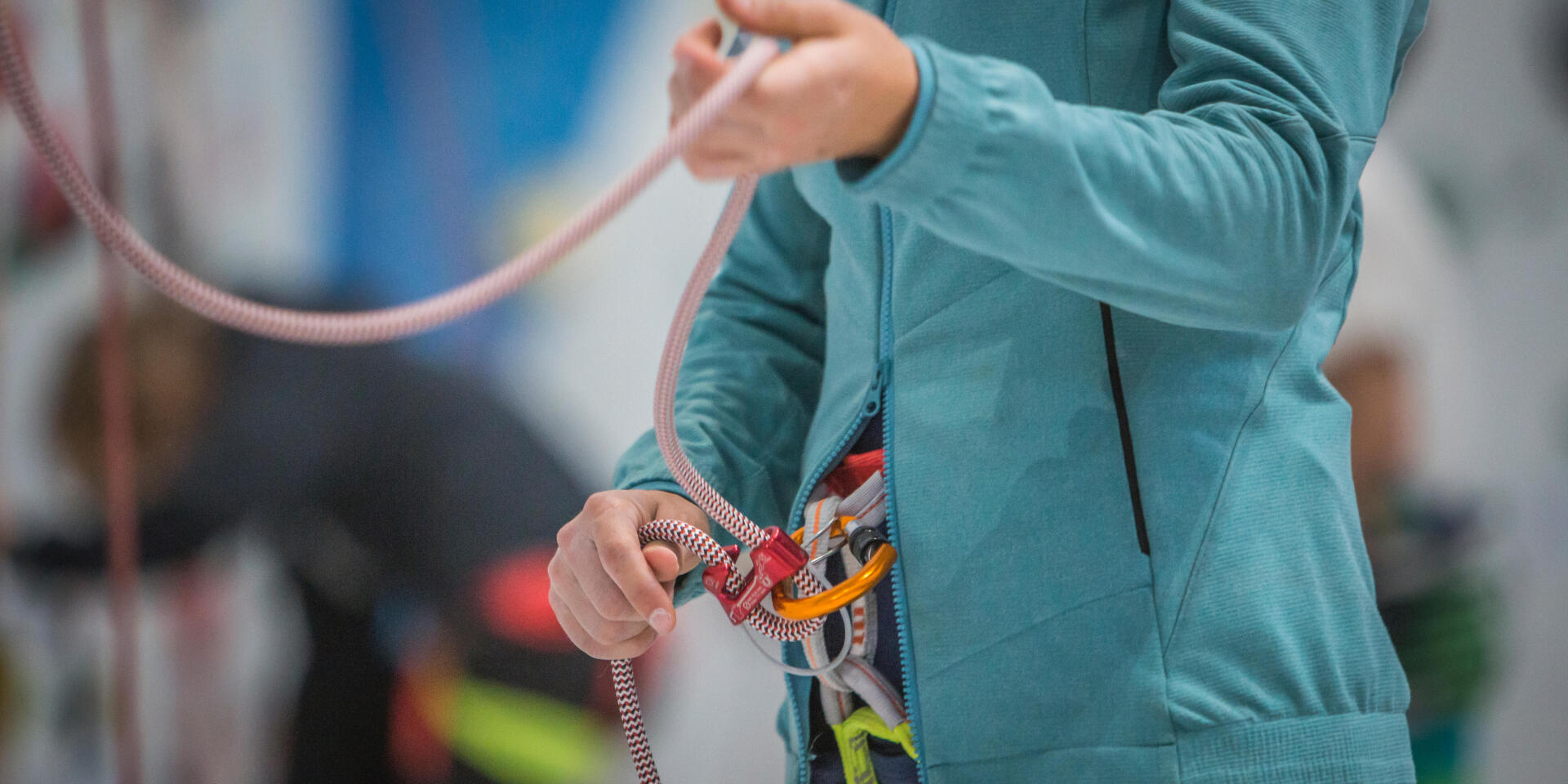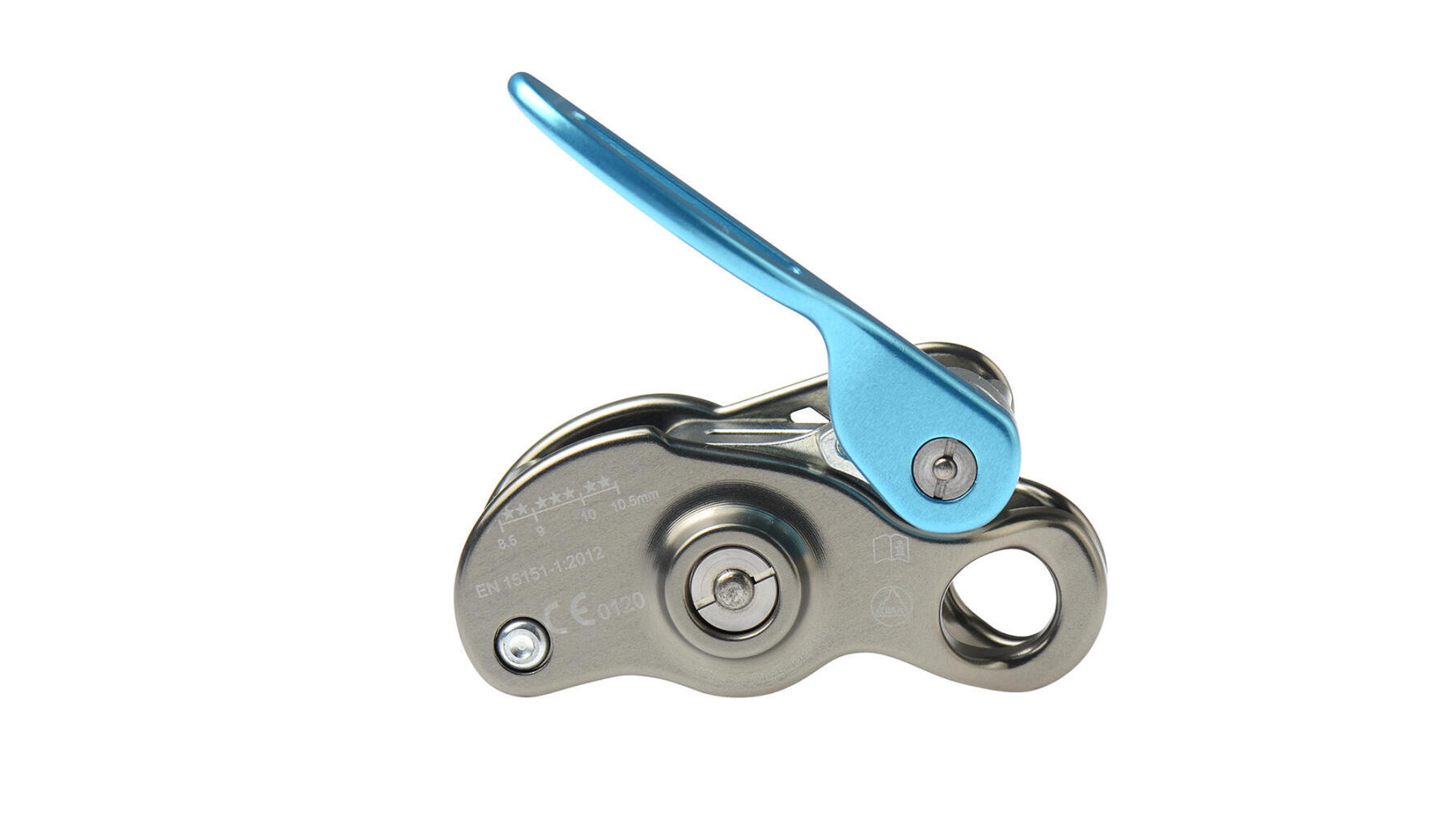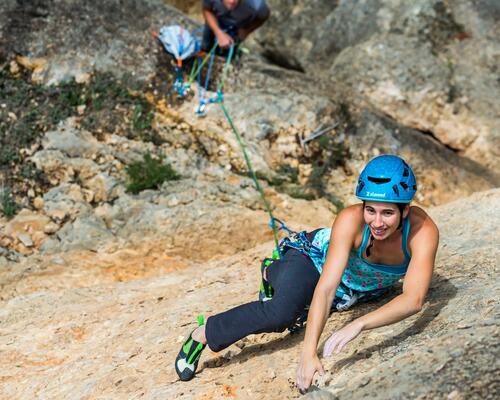Belaying a single pitch using a single rope
You’ll need a conventional descender
Conventional descenders are the simplest type of belay system. They’re not necessarily the most advanced, but conventional descenders are easy to handle and less likely to be used incorrectly.
Even the simplest systems are designed to make your life easier!






